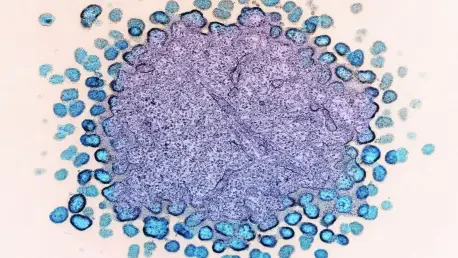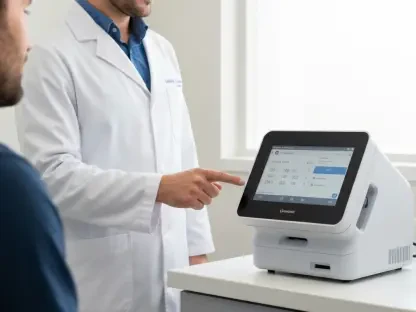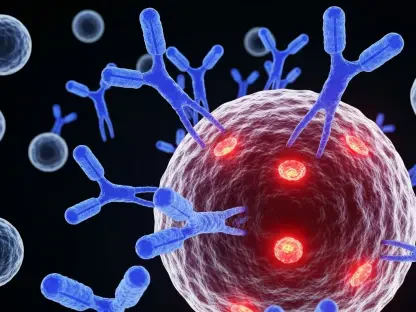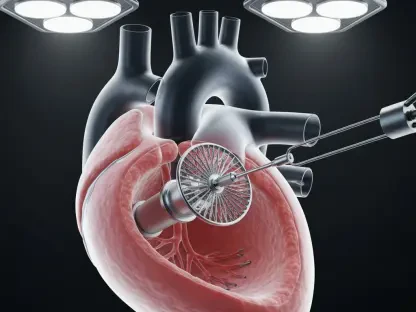Parkinson’s disease, a progressive and degenerative brain condition, affects more than 1 percent of individuals over the age of 60 worldwide, leading to symptoms such as slow movements, muscle tremors, stiffness, and difficulty walking. Traditional treatments focus primarily on managing dopamine levels with medications but do not offer a cure or slow the disease’s progression. Recent advancements in stem cell therapy offer a groundbreaking potential treatment path by replenishing lost neurons and reconstructing brain circuitry, providing a glimmer of hope for patients.
Understanding Parkinson’s Disease
The essence of Parkinson’s disease lies in the gradual deterioration of dopamine-producing neurons located in the basal ganglia, a vital part of the brain responsible for regulating movement. This progressive neuron loss results in dopamine deficiency, which manifests as the hallmark motor symptoms of Parkinson’s disease. Current treatment approaches mainly focus on mitigating these symptoms by enhancing dopamine levels in the brain, yet they fall short in addressing the root cause—neuronal loss—or altering the course of the disease’s progression.
The continuous depletion of dopamine over time exacerbates the symptoms, making it increasingly challenging for patients to maintain their quality of life. Although medication can provide temporary relief, the need for more effective, longer-lasting solutions has driven researchers to explore alternative therapies. The potential to target and replace the lost neurons could revolutionize the management of Parkinson’s disease, offering a new avenue of hope for millions globally.
Concept and Promise of Stem Cell Therapy
Stem cells, often referred to as “master cells,” possess a unique ability to differentiate into any cell type in the body, which makes them invaluable for regenerative medicine. Their versatility paves the way for innovative treatments aimed at repairing or replacing damaged or diseased cells. By harnessing stem cells’ regenerative potential, researchers endeavor to replace the deteriorated neurons characteristic of Parkinson’s disease. The success of stem cell therapy in other medical contexts, such as bone marrow transplants for leukemia, provides a foundation of optimism for its applicability to neurodegenerative diseases like Parkinson’s.
In the context of Parkinson’s, stem cell therapy involves deriving dopaminergic neuron progenitors from stem cells and transplanting them into affected brain regions to replace the lost neurons. This approach has the potential to not just alleviate symptoms but also to halt or reverse disease progression by restoring the brain’s capacity to produce dopamine naturally. This strategy represents a paradigm shift in treating neurodegenerative diseases, moving beyond symptomatic treatment and aiming for disease modification and possibly a cure.
Initial Clinical Trials and Their Significance
Recent small-scale clinical trials have been pivotal in evaluating the safety and feasibility of injecting stem cell-derived neurons into the brains of Parkinson’s patients. These trials, conducted with small participant groups, involved two major studies: one in the U.S. and Canada using stem cells derived from donated human embryos, and another in Japan utilizing adult-derived stem cells. The primary focus of these trials was to ensure the absence of significant adverse effects, such as tumor development or uncontrolled bleeding, which could pose serious risks to patients.
Both trials reported no major safety concerns, an encouraging outcome that underscores the initial viability of this treatment approach. Ensuring patient safety is a crucial step in advancing to larger-scale studies, as it lays the groundwork for broader application and acceptance of stem cell therapies. The positive safety profiles observed in these initial trials provide a solid foundation for moving forward, potentially transforming experimental treatments into common practice.
Early-Stage Outcomes and Findings
The early-stage results from these studies, while not definitive, were promising and suggested potential effectiveness of stem cell therapy for Parkinson’s disease. In the U.S. and Canada trial, participants were divided into groups receiving either a low dose (0.9 million cells) or a high dose (2.7 million cells) of stem cells. The researchers observed a dose-dependent response, with the high-dose group demonstrating a significant 20-point improvement on the standard Parkinson’s progression scale, compared to a nine-point improvement in the low-dose group. These outcomes hinted at the potential of higher doses to yield more substantial improvements in patient symptoms.
The smaller-scale study in Japan also noted symptom improvements among participants, further supporting the potential efficacy of stem cell-derived neuron transplants. Although the sample sizes in both studies were too limited to draw definitive conclusions, the observed improvements provided a strong rationale for larger trials. By demonstrating dose-dependent responses and initial symptom relief, these trials have fueled optimism for the further development and refinement of stem cell therapies for Parkinson’s disease.
Historical Context of Stem Cell Therapy in Parkinson’s
The idea of employing stem cells to treat Parkinson’s disease is not novel, with past trials producing mixed results. Earlier efforts raised both hope and skepticism within the scientific community. While some patients experienced symptomatic relief, there were also concerns about potential complications, such as the spread of diseases to implanted healthy cells. These mixed outcomes led to alternating periods of enthusiasm and caution regarding the feasibility of stem cell treatments for Parkinson’s.
The history of stem cell therapy in Parkinson’s has been characterized by cyclical waves of high expectations followed by tempered skepticism. Each new trial builds on the lessons learned from previous studies, striving to refine techniques and improve outcomes. Despite the challenges, the continued pursuit of stem cell therapy underscores the ongoing commitment to finding a solution that offers more than symptomatic relief, aiming for a treatment that can potentially modify or halt the disease’s progression.
Moving Toward Broader Clinical Trials
Buoyed by the absence of major adverse effects and initial signs of symptom improvement in early trials, researchers are now planning larger-scale clinical trials to better evaluate the efficacy of stem cell therapy for Parkinson’s disease. These future studies aim to include a broader array of participants and refine dosing strategies based on earlier findings. By expanding the scope of the trials, scientists hope to gain a more comprehensive understanding of how stem cell-derived neurons can impact the progression and symptoms of Parkinson’s disease.
The next phase of research will focus on not only assessing efficacy but also optimizing treatment protocols to maximize patient benefits. This involves fine-tuning the source of stem cells, the method of delivery, and the dosing regimens to achieve the best possible outcomes. If these larger trials continue to show safety and effectiveness, stem cell therapy could transition from an experimental treatment to a standard option for Parkinson’s disease patients, potentially transforming the landscape of neurodegenerative disease management.
Future Implications for Parkinson’s Disease Management
Parkinson’s disease is a progressive and degenerative brain condition that affects over 1 percent of individuals worldwide who are over the age of 60. This debilitating disorder leads to symptoms such as slow movements, muscle tremors, stiffness, and walking difficulties. Traditional treatments primarily focus on managing dopamine levels with medications, which help alleviate symptoms but neither provide a cure nor slow the disease’s progression. Recent advancements in stem cell therapy offer an innovative treatment path. This groundbreaking approach involves replenishing lost neurons and reconstructing brain circuitry, offering a glimmer of hope for patients. This therapy could potentially halt the progression of Parkinson’s disease by addressing the root cause, fundamentally changing how the condition is treated. Although still in experimental stages, stem cell therapy represents a significant leap forward in the quest to find an effective treatment and improve the quality of life for those affected by Parkinson’s disease.









